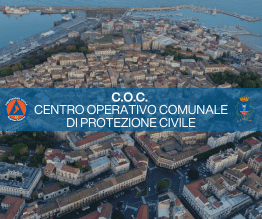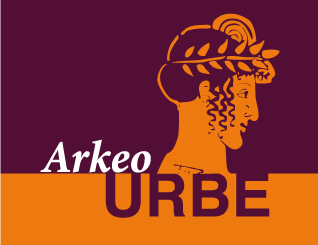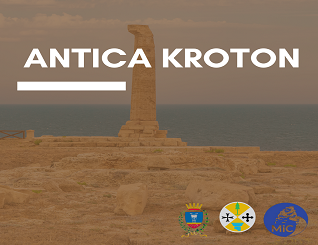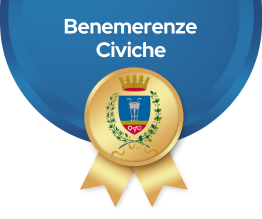
Cultura
Cenni storici
La fondazione di Kroton avvenne sulla fine dell'VIII secolo a.C. ad opera degli Achei. Di tale evento la leggenda ha tramandato la storia di Myskellos di Rhype il quale, avendo interrogato l'oracolo di Apollo a Delfi ebbe l'ordine di fondare una nuova città nel territorio compreso fra Capo Lacinio e Punta Alice.
Raggiunge il massimo splendore nel V° secolo, con la scuola filosofica, fondata da Pitagora; con la fiorente scuola medica, di cui si ricordano Alcmeone e Democede; con la vigoria dei suoi atleti, dei quali si ricorda, fra tutti, Milone, vincitore di molte Olimpiadi; con la bellezza delle sue donne, che fanno da modelle a Zeus per il dipinto di Elena.
La città antica ha un circuito murario di 12 miglia ed il fiume Esaro la divide in due parti. La sua zona di influenza (chora) si estende a sud fino a Locri; a nord fino a Sibari, che vince nel 510 a.C.; ad ovest fino al Mar Tirreno. A questo periodo risale l'Heraion di Capo Colonna, che della città greca costituisce uno dei templi extramuranei.
In periodo romano, con il passaggio di Pirro e di Annibale la città si avvia ad irrimediabile declino e si restringe notevolmente, secondo le notizie riportate da Tito Livio e da Petronio.
In periodo medioevale, a seguito delle continue invasioni barbariche, la città si restringe alla sola collina dell'attuale Centro Storico, ed è protetta da una cinta muraria che circonda l'abitato, seguendo l'andamento del terreno.
Fino al Quattrocento la città ed il suo territorio sono feudo della famiglia Ruffo di Calabria, che li detiene con il titolo di marchese, da cui deriva il nome di Marchesato che ancora tutta la zona conserva.
Nel 1531 la città, da feudale diventa pertinente del Regio Demanio, e Carlo V, nel piano di fortificazione delle zone costiere, ordina di provvedere alla costruzione di una nuova cinta muraria e del Castello.
Il vicerè Don Pedro da Toledo fa iniziare detti lavori nel 1541, affidandone la cura all'architetto militare Gian Giacomo D'Acaja e successivamente al padovano Giovanni Maria Buzzacarino.
La cinta muraria, a pianta poligonale, munita di cinque baluardi è protetta, da una parte, dal mare e, dalla restante parte, da ampi fossati e dalla cospicua elevazione.
Nel 1799, sull'eco di quanto era accaduto a Napoli, anche a Crotone, la cittadinanza si impadronisce del potere ed innalza l'albero della libertà al posto del Seggio dei nobili.
Ma la feroce repressione operata dalle truppe sanfediste del cardinale Ruffo, ha ragione dell'accanita resistenza della città, con grave saccheggio.
Nel 1808 la città viene conquistata dai francesi che la detengono fino al 1815. In periodo borbonico la città è meta della sfortunata spedizione dei fratelli Bandiera, che sui trascorsi libertari della sua popolazione, contano per suscitare una insurrezione che si estenda a tutta la Calabria.
Dopo l'Unità d'Italia la città vive una profonda trasformazione e nascono i presupposti per il suo sviluppo futuro, legati al porto ed alla produzione di energia elettrica, che agevola l'insediamento di grossi complessi industriali, ora dismessi.
Il Regio decreto del 2 febbraio 1938 istituisce il Comune di Crotone
BRIEF
HISTORY
The
founding of Kroton happened at the end of the VIII century B.C. by
the Achey. About this event the legend has it that Myskellos of
Rhype, having interrogated Apollo’s oracle in Delfi, had the order
to found a new city in the area between Capo Lacinio and Punta Alice.
It
reaches its maximum glory in the V century, with the philosophical
school founded by Pitagora; with the thriving medical school, of
which is to mention Alcmeone and Democede, with the vigour of its
athletes, of whom, among all, Milone, the winner of many Olympics,
with the beauty of its women that serve as models to Zeus for Elena’s
painting.
The
ancient city has city walls 12 miles long and the river Esaro divides
it in two parts. It’s influence area (chora) extends south up until
Locri; north until Sibari, that gains in 510 B.C. and west until the
Tyrrhenian Sea. Goes back to this period the Heraion of Capo Colonna,
which constitutes one of the extramural temples of the Greek city.
In
the roman period with the passage of Pirro and Annibale the city
begins to near its own demise and to considerably shrink, according
to the news reported by Tito Livio and Petronio.
In
the medieval period, after ongoing barbaric invasions,
the city shrinks down until the single hill of the present historical
centre, protected by city walls that surround the area, following the
lay of the land/topography.
Until
the 400 the city and its territory are feud of the family Russo of
Calabria, that owns them with the title of marquis, of which comes
the name of Marquisate that all of the area still retains.
In
1531 the city, from feudal becomes part of the Royal property, and
Carlo V, in the costal areas fortification plan, orders to provide
for the construction of city walls for the castle.
The
vice king Don Pedro from Toledo starts the works in 1541 assigning
them to the military architect Gian Giacomo D’Acaja and
subsequently to the padovan Giovanni Maria Buzzacarino.
The
city walls, with a polygonal plant, composed of five bastions are
protected on a side by the sea and on the remaining part by large
ditches of significant elevation.
In
1799,on the resonance of what had happened in Naples, even in
Crotone, the town takes over/seizes the power and raises the tree of
freedom in place of the chair of nobles.
However
the fierce repression operated by the sanfedist troops of the
cardinal Ruffo,was defeated thanks to the relentless endurance of
the city, resulting in violent lootings.
In
1808 the city gets conquered by the frenches that retain it until
1815. In the borbonic period the city is half of the unlucky
expedition headed by the Bandiera’s broders, that count on the
libertarian past of its population to raise an insurrection that will
extend through all of Calabria.
After
the Unification of Italy the city goes through a radical
transformation and emerge the preconditions for its future
development, especially related to the harbour and electric energy
production, which facilitates the settlement of big industrial
estates, now disused.
On
February 2nd 1938 the Royal Decree establishes the City of Crotone.
BREVE HISTORIA
La fundación de Kroton ocurrió por la fin del siglo VIII a.C. por los griegos. De este hecho la leyenda cuenta la historia de Myskellos de Rhype el que, después de interrogar al oráculo de Apolo de Delfos, recibió el orden de fundar una nueva ciudad en el área entre Capo Lacinio y Punta Alice.
La ciudad alcanza su máximo esplendor en el siglo V, gracias a la escuela filosófica fundada por Pitágoras; la florescente escuela de medicina, de los que se recuerdan Alcmeón y Democede, con sus vigorosos atletas, entre todos se recuerda, Milone ganador de muchos juegos olímpicos, con la bellezza de sus damas, que hacen de modelos a Zeus por la puntura de Elena.La antigua ciudad tiene un circuito de pared de 12 millas dividido en dos partes por el río Esaro.
Su área de influencia (chora) se extiende hacia el sur hasta Locri, a norte hasta Sibari, que conquista en el 510 a.C. y hacia el oeste hasta el Mar Tirreno. A este período se remota el Heraion de Capo Colonna, que costituye uno de los templos extramurales de la ciudad griega.
En el período romano, con el paso de Pirro y Ánibal, la ciudad comienza a declinar irremediablemente y se estrecha considerablemente, según las noticias dadas por Tito Livio y Petronio.
En época medieval, como resultado de contínuas invasiones bárbaras, la ciudad se estrecha hasta la colina del actual Centro histórico, y está protegida por una muralla que rodea la ciudad.Hasta el 400 la ciudad y su territorio son feudo de la familia Ruffo de Calabria, que los posee con el título de Marqués, de lo que llega el nombre de Marquesado que hasta hoy toda la zona conserva.
En el 1531, la ciudad de feudal se convierte en propriedad real del estado, y Carlo V, en el plan de fortificación de las zonas costeras, ordena la costrucción de una nueva muralla y del Castillo.
El virrey Don Pedro de Toledo hace empezar los trabajos en el 1541, confidando su cuidado al architecto militate Gian Giacomo D’Acaja y después al padovano Giovanni Maria Buzzacarino.
La muralla de planta poligonal, equipada con cinco baluartes está protegida, de un lado, por el mar y, de la otra, por amplios fosos elevados.
En el 1799, siguiendo lo que había sucedido en Nápoles, también en Crotone, la ciudadanía toma el poder y levanta el árbol de la libertad en lugar del asiento de los nobles.
La feroz represión operada por las tropas sanfedistes del Cardenal Ruffo, fue derrotada gracias a la feroz resistencia de la ciudad, causando, sin embargo, graves sequeos.
En el 1808 la ciudad es conquistada por los franceses que la tienen hasta el 1815. Durante el período borbónico la ciudad es el lugar de la desafortunada expedición de los hermanos Bandiera, que sobre los antecedentes libertarios de su población, quieren provocar una insurrección que se extienda a toda Calabria.
Después de la unificación de Italia, la ciudad vive una profunda transformación y se crean las condiciones para su desarrollo futuro, relacionados con el puerto y la producción de electricidad, que facilita la instalación de grandes complejos industriales, ahora fuera de servicio.
El decreto real del dos de Februero 1938 instituye el municipio de Crotone.
Fonte: Settore Culturale
Data ultimo aggiornamento 8 Agosto 2017
Revisionato da Alessandra Vrenna



















